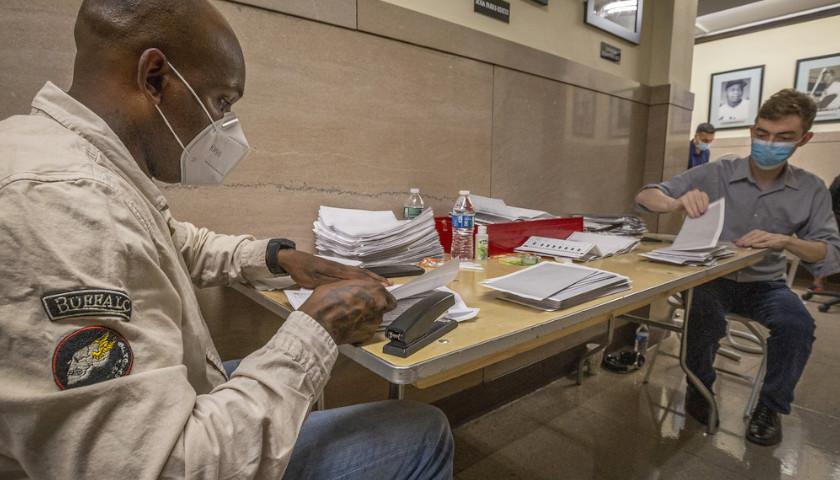A report from the America First Policy Institute (AFPI) found that there may be an 8,241-vote discrepancy between those who cast votes in Maricopa County’s 2022 election and the number of ballots that were counted. This is “about 29.4 times” the difference between the contested attorney general’s race, the report stated, which Democrat Kris Mayes won by 280 votes.
On Friday, Mohave County Judge Lee F. Jantzen denied Abe Hamadeh’s request for a new hearing in his election challenge.
The report was conducted due to concerns that “some ballots could have been counted multiple times” and “ballots could have been destroyed.” It cited an audit conducted after the 2020 election in Fulton County, Georgia, which found that 200 absentee ballots were scanned twice.
The investigators asked election officials in six counties in Arizona for “official tabulations of total ballots counted in the election.” They submitted public records for the list of voters who voted in the 2022 general election. They asked for identifying data from multiple fields like registered addresses to ensure there were no mistaken identities.
The investigators solicited this information from 100 counties across the country. Although federal law requires election officials to retain data from elections for 22 months, they found that “only 6% of county election officials and two secretaries of state for the states and counties provided data.” Of the counties that provided data, they “found an average 2.89% discrepancy rate — where either there were more registered voters listed as voting than there were ballots counted or, in other precincts, the reverse.”
When confronted about the discrepancies, some of the county officials claimed that their data was “fluid;” it wasn’t precisely accurate on Election Day due to factors like saving over old files to preserve space. AFPI expressed skepticism. “But data storage is trivially inexpensive, and saving a file time-stamped on election day would be easy,” the report said. “Yet, amazingly, these election bureaus frequently claim they do not archive their data.”
In the six Arizona counties examined, “6,057 more ballots were recorded as cast than there were registered voters listed as voting,” and “where the reverse was true, 2,184 more registered voters were listed as voting than ballots shown as counted.” This was “0.36% of the total ballots counted.”
The biggest total discrepancy was in Maricopa County, with 2,625 more ballots cast than registered voters listed as voting, and 239 more registered voters listed as voting than ballots counted.
The investigation found three reasons could explain away some of the differences in numbers, but not all. First, some of those who voted may not have been included in the numbers since they were “secured voters,” those with protected addresses. However, even adding in as many of them as the researchers could discover, it still left a few thousand ballots unaccounted for in Arizona.
Second, voters who checked in at a precinct or vote center but walked out without casting their ballot were listed as having voted. Even if this explained all of the discrepancies involving fewer ballots counted, the report asserted, it did not explain the reverse scenario, which “still leaves 2,242 unexplained discrepancies outside of Maricopa County after taking into account the secured voters whose identities were masked.”
Third, Pima and Pinal Counties told the researchers that they “immediately start updating their list of voters after the election and save over their original files.” This violates the 22-month federal retention requirement. The report found that when these numbers were taken into account, “it would still leave a discrepancy of 688 votes,” which is “still larger than the 280-vote difference in the attorney general race.”
The report did not look into whether the discrepancies were intentional or accidental or who the voters voted for. As a solution, it recommended that Arizona modify its laws to match a proposed law in Ohio, which will open source election records, making them available for public inspection instead of requiring people to submit public records requests. “Identifying discrepancies early will give election officials a clear roadmap on how and where to address wide-ranging issues from potential fraud to inaccurate recordkeeping,” the report concluded.
– – –
Rachel Alexander is a reporter at The Arizona Sun Times and The Star News Network. Follow Rachel on Twitter. Email tips to [email protected].





